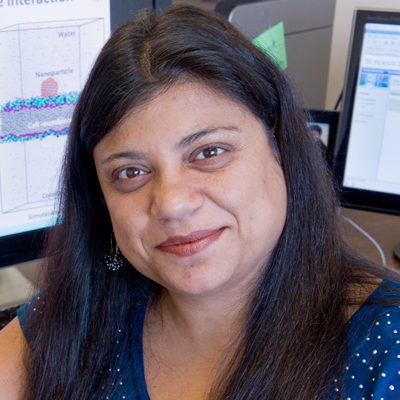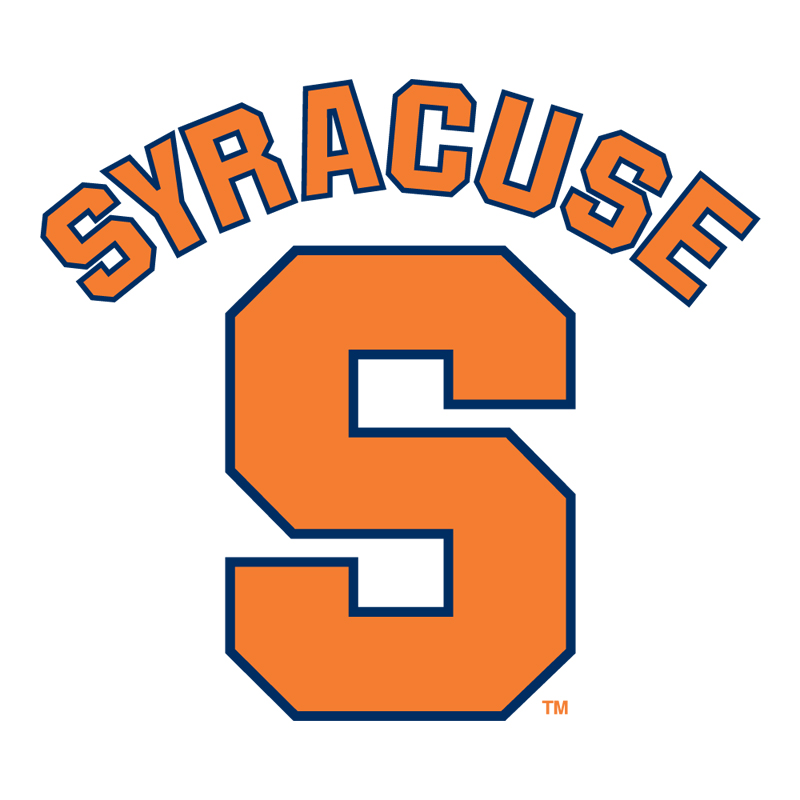An engineering marvel for the future of therapeutics
The blood-brain barrier (BBB) serves the critical role of allowing only certain types of molecules to enter the brain from the blood stream. This important capability protects the brain from exposure to undesirable chemical compounds. However, it also prevents certain drugs from entering the brain to treat disorders or diseases like the Alzheimer’s disease. Dr. Shikha Nangia, Assistant Professor of Biomedical and Chemical Engineering at Syracuse University, develops multiscale modeling techniques to understand the limited permeability of the BBB. Since the segment of the US population older than 65 is expected to increase by 50% by 2030, and the cost of care to treat patients with these kinds of brain diseases is billions of dollars per year, finding new ways to help address the BBB would provide significant benefits to patients and the nation. Thus, Dr. Nangia’s research will combine existing theories in a new way to understand how this movement is controlled across the BBB, and will use an extensive computational tool-kit to engineer favorable pathways to transcend around it.
It is through the unique delivery of novel computational approaches that Dr. Nangia and her team are helping to elucidate the molecular interaction at the biological interfaces. Thus, rather than an experimental approach that requires researchers to guess and test, Dr. Nangia uses sophisticated mathematics and computers to develop models to study the transport of chemical therapeutics across the BBB. In this way, her research is likely to shed light on the molecular basis of what is causing the BBB, a mystery that has been studied for many years. Furthermore, by understanding the BBB, Dr. Nangia is highly motivated to find therapeutic targets for detrimental diseases, and she and her team are specifically interested in finding therapeutics for Alzheimer’s disease. Additionally, because molecules that cause the BBB are everywhere in the body, Dr. Nangia’s research, given adequate funding and resources, could help aid in the treatment of colon cancer and diabetes.
Dr. Nangia’s research goals are threefold, including:
-
The Cause: At the most fundamental level, Dr. Nangia and her team hope to understand what is underlying the BBB. Through the use of computational models, she and her team are able to decipher the structural details of the how the BBB works.
-
Mathematical Models: Once Dr. Nangia is able to explain structurally how the BBB works, she and her team will compute which chemicals are liable to cross the BBB. This will be an important step in explaining the mechanisms required for therapeutics that Dr. Nangia hopes to drive beyond the BBB.
-
Drug Design: Dr. Nangia’s primary motivation is to provide molecular-level strategies to deliver drug molecules to the brain, characterize the thermodynamics, and transport kinetics of the BBB. Once she is able to understand the cause of the BBB and how to surpass the fortified molecular wall, she and her team hope to design drugs that will be life changing for patients around the world.
Bio
Research was always fascinating to Dr. Shikha Nangia because it “promises to be an adventure into the unknown.” Although it is challenging, Dr. Nangia admits, “it is equally rewarding.” She first became interested in performing computational research in biomedical and chemical engineering during her undergraduate studies through her professors who immersed her in experimetal labs. While this experimental work helped Dr. Nangia to question the world and view it with a scientific lens, she became increasingly frustrated with experimental methods. That is why she chose to be a computational researcher; it was in computational research where she felt she could reach the most accurate conclusions in the most effective way.
After completing her masters degree in her home country of India, she moved to the US to begin her Ph.D. program. She describes the courage it took as a young woman from India, who had never traveled abroad and had no acquaintances in US, to pursue a career in the sciences in the US. Dr. Nangia was the first in her family to ever come to the US to pursue higher education and arrived with two bags and $1000.
Aside from research, in her free time, Dr. Nangia has a creative side as well. She enjoys taking her research and turning it into artistry. For instance, with many of the articles she submits, she creates artwork to showcase the deep creativity that hides beneath her science.
Website: www.shikha.org


